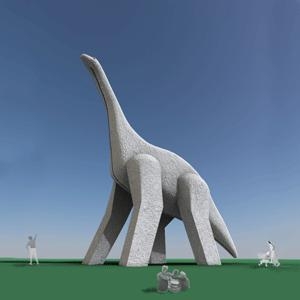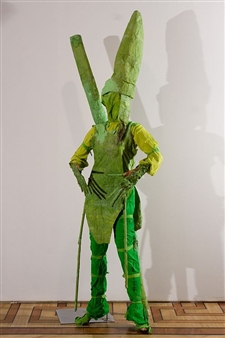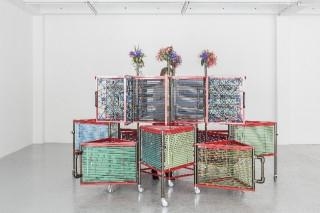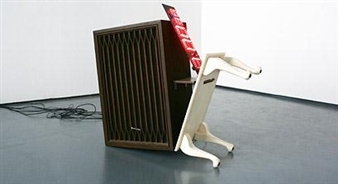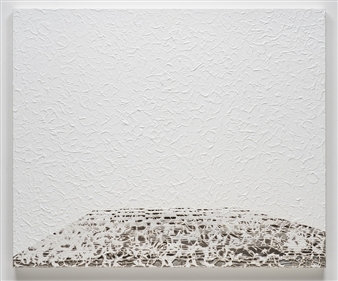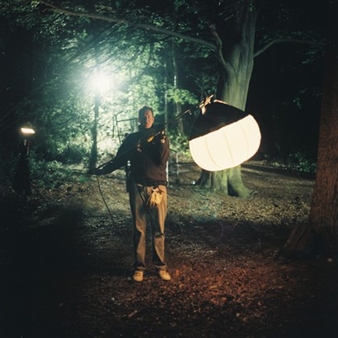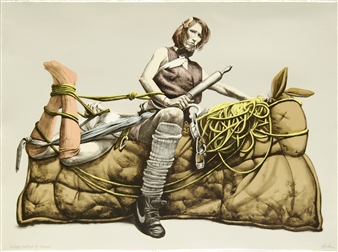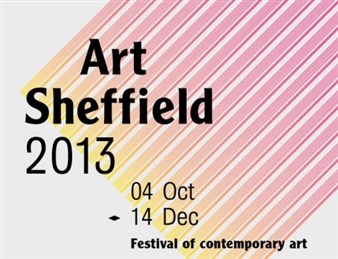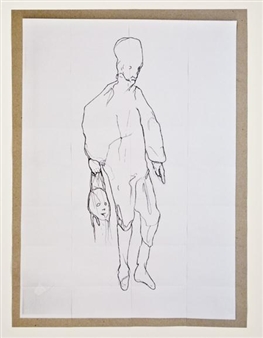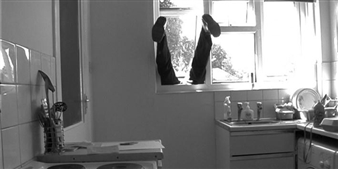Margaret Salmon: The Moon is Down
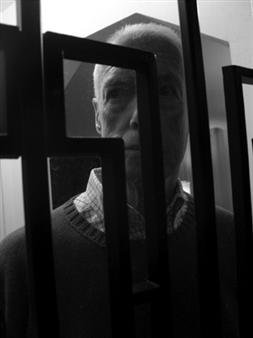
STORE Gallery, Ealing, London, 08/29/2008 - 10/04/2008
27 Hoxton Street
The literary allusions in the title of Margaret Salmon’s latest solo exhibition suggest that whilst the actions of men might come to define them, that definition is never complete. When Steinbeck’s book ‘The Moon is Down’ was published in 1942, it solicited mixed responses. The story recounts the fortunes of an unnamed community in Europe forced to face Nazi occupiers. Even though Steinbeck was inspired by the stories of European resistance, some American critics argued that Steinbeck was wrong to portray the Nazi soldiers as rounded characters, rather than caricatured monsters. However it is because of this rounded-out nature of their characters that we are able to witness the psychological disintegration of the soldiers in the face of growing resistance. Retrospectively of course, they are nothing but monsters, but Steinbeck’s portrayal of them suggests that this was not always inevitable – at one point at least there was a gap between who they were and what they were to become. One of the characters in the village, the Mayor, reflects on the growing success of the resistance: “It is always the herd men who win battles and the free men who win wars.” Steinbeck’s, and now Salmon’s title, was originally drawn from an earlier text – ‘Macbeth’. Just before Banquo and his son Fleance encounter Macbeth, who is on his way to murder Duncan, Banquo asks his son, “How goes the night, boy?” Fleance replies, “The moon is down; I have not heard the clock.” By the end of the scene the bell has rung and Macbeth hearing it, sets off to kill Duncan: “I go, and it is done; the bell invites me.” This is the moment that Macbeth becomes what he is fated to be – a murderer and usurper. Macbeth’s actions damn him, yet given they are arguably predestined at the outset by the three witches’ vision, what chance has he to impose his own will on events? Again there is an ambivalence around the events, ambiguities and choices that come to define a man. The protagonists in Salmon’s two new works are seemingly defined by their vocations: soldier, policeman, hunter, fireman. All either talk about or enact what they do or did for a living – we see the hunter tracking a steer, the fireman enter a burning building. Both works foreground the actions that come to define these men’s lives, but each suggests that there isn’t a straightforward equivalence between what these men do and who they are. The hunter talks about how he finally gave up hunting after a heart attack, the fireman’s job is given a visual richness that is at odds with functionality through being shot in Ektachrome. Each work acknowledges the presence of death in the world, as perhaps subconsciously do Fleance’s words. It is the protagonists’ quiet realisation of this, rather than the jobs that identify them, that lie at the heart of the way they go about what they do. But the fact that they do go on doing this is affirmatory – as the Mayor also says in Steinbeck’s book, “I am a little man and this is a little man, but there must be a spark in little men that can burst into flame.\\\"
For More Information